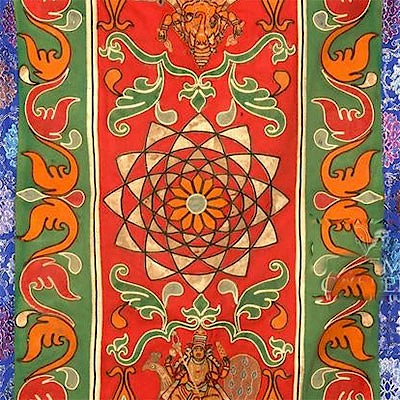Rare Paracas Textile Doll (for a child)
Lot 439
About Seller
Artemis Fine Arts
686 S Taylor Ave, Ste 106
Louisville, CO 80027
United States
Selling antiquities, ancient and ethnographic art online since 1993, Artemis Gallery specializes in Classical Antiquities (Egyptian, Greek, Roman, Near Eastern), Asian, Pre-Columbian, African / Tribal / Oceanographic art. Our extensive inventory includes pottery, stone, metal, wood, glass and textil...Read more
Estimate:
$2,600 - $3,900
Absentee vs Live bid
Two ways to bid:
- Leave a max absentee bid and the platform will bid on your behalf up to your maximum bid during the live auction.
- Bid live during the auction and your bids will be submitted real-time to the auctioneer.
Bid Increments
| Price | Bid Increment |
|---|---|
| $0 | $25 |
| $300 | $50 |
| $1,000 | $100 |
| $2,000 | $250 |
| $5,000 | $500 |
| $10,000 | $1,000 |
| $20,000 | $2,500 |
| $50,000 | $5,000 |
| $100,000 | $10,000 |
| $200,000 | $20,000 |
About Auction
By Artemis Fine Arts
Oct 17, 2019
Set Reminder
2019-10-17 10:00:00
2019-10-17 10:00:00
America/New_York
Bidsquare
Bidsquare : Early Fall Variety | Ancient & Ethnographic
https://www.bidsquare.com/auctions/artemis-gallery/early-fall-variety-ancient-ethnographic-4538
Discover incredible lots relisted with new, lower start prices (up to 50% less), plus many items brand-new to auction. Step back in time and around the world – you’ll be amazed at the treasures you will find. Antiquities from the Classics, Asian, Pre-Columbian African and much more! Artemis Fine Arts info@artemisfinearts.com
Discover incredible lots relisted with new, lower start prices (up to 50% less), plus many items brand-new to auction. Step back in time and around the world – you’ll be amazed at the treasures you will find. Antiquities from the Classics, Asian, Pre-Columbian African and much more! Artemis Fine Arts info@artemisfinearts.com
- Lot Description
**Originally Listed At $1500**
Pre-Columbian, South Coast Peru, Paracas, ca. 500 to 300 BCE. An incredibly rare textile doll comprised of tightly-woven camelid (alpaca or llama wool) fibers on the head and loose fibers on the body, all in citrine, grapefruit, chocolate, gold, emerald, turquoise, and white hues. The doll has a highly-detailed head with concentric circular eyes, a slender nose flanked by a pair of diagonal threads, a petite mouth, and a thin, collared neck, all enclosed within a radiating border of polychromatic fibers. The flowing body is composed of dozens of individual threads, the ends of which are bound together as the head of the doll. Mounted against a fabric-lined wooden frame. Size (textile): 8.25" W x 16.75" H (21 cm x 42.5 cm); size (frame): 12" W x 16" H (30.5 cm x 40.6 cm).
Dolls like this example may not have been so simplistic in their symbolism as children required protection as well. Dolls were not only a means of keeping a playful child occupied, but as a symbolic means of protection against evil spirits or natural forces that may cause harm to a child. Archaeologists have ample evidence of child-oriented play things in Pre-Columbian South America, like with the Chimu or the Chancay, though very seldom do they find dolls, toys, or evidence that such objects existed within the Paracas culture. The archaeological community does not understand the purpose of such Paracas dolls, though examples such as this may provide some insight into their underlying significance.
Provenance: private Hawaii, USA collection; ex-private H. J. Westermann collection, Germany
All items legal to buy/sell under U.S. Statute covering cultural patrimony Code 2600, CHAPTER 14, and are guaranteed to be as described or your money back.
A Certificate of Authenticity will accompany all winning bids.
We ship worldwide and handle all shipping in-house for your convenience.
#136652Some fraying to threads on head and body, and light fading to pigmentation, otherwise intact and excellent.Condition
- Shipping Info
-
All shipping is handled in-house for your convenience. Your invoice from Artemis Gallery will include shipping calculation instructions. If in doubt, please inquire BEFORE bidding for estimated shipping costs for individual items.
-
- Buyer's Premium



 EUR
EUR CAD
CAD AUD
AUD GBP
GBP MXN
MXN HKD
HKD CNY
CNY MYR
MYR SEK
SEK SGD
SGD CHF
CHF THB
THB














